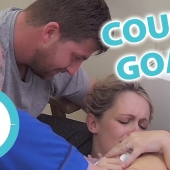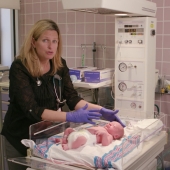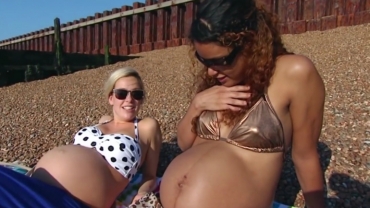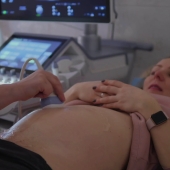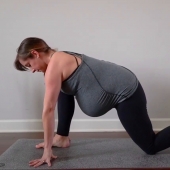During most of pregnancy, there is enough room in the uterus for the baby (fetus) to change position. By 36 weeks of pregnancy, most babies turn into a head-down position. This is the normal and safest fetal position for birth.
If your baby is lying feet first with their bottom downwards, they are in the breech position. This makes your care more complicated. Your obstetrician and midwife will discuss with you the best and safest form of care. You will be advised to have your baby in hospital
The chances of a vertex (normal position) baby being born with an abnormality are 2.4% The chances of a breech baby being born with an abnormality are 6.3%. Again, there is a 93% likelihood that your baby is normal.
Here are some possible explanations/risk factors for breech:
1 - Your uterine and pelvic muscles, tissues and fascia are unbalanced. Think of your uterus like a ballon. As the baby grows, the uterus does too, taking up more and more of your abdominal cavity. Your uterus is connected by ligaments to your body, nestled in your hips. If your hips or pelvis are toqued or unbalanced, it affects the shape of the uterus. A tight ligament can pull on one side of the uterus, making it harder for baby to turn or settle head-down. Any unbalance can make it awkward for the baby to turn.
2 - Your uterus has abnormal shape or function. If you have bicornuate uterus or a uterine septum, you are much more likely to have a breech baby. If you have had a pelvic injury, malnutrition as a child, or used the pill in adolescence before your bones were fully formed, you may have an increased risk of pelvic-weirdness affecting your baby’s position. Even so, seems unlikely.
3 - Breech position runs in the family. If you or your baby’s dad were breech, or there are other breech babies in your family history, breech position may run in your family. Why? No one really knows. If this is the case with you, your baby is less likely to turn and less likely to have any kind of abnormality. It’s just a family thing.
4 - You aren't a teenager. The incidence of breech rises with maternal age. Teen moms have a 42.8/1000 rate of breech babies at term, and the incidence rises from there to a rate of 84.6/1000 for moms aged 40-54.
5 - You experience a lot of stress/anxiety. The hard science is that stress causes tightening in the lower uterine segment. Anxious moms have more breech babies. Your hormones go to your baby. If you are freaking out, your baby is feeling it.
6 - You've had previous breech pregnancies. About 10% of of women whose 1st baby is breech go on to have a second breech baby. You have an increased risk of a breech if any previous pregnancies were breech at term. Here is a study with detailed information about the recurrence of breech in mamas’ 2nd/3rd pregnancies.
7 - You suffer from diabetes. There is a serious increase in the chances of your baby being breech, possibly from the decreased fetal movements that moms with diabetes experience.
8 - The placenta or cord is in an unfavorable loacation. If your placenta is right on top or right on bottom (placenta previa) of your uterus, your baby’s position may be affected.
9 - There is a deficiency of kidney energy in your body. A traditional Chinese medicine viewpoint from this interesting pdf says the main cause of breech position (and any malpresentation) is a deficiency in Kidney energy which is related to the uterus and has a role in nourishment of the fetus.
10 - It's your first pregnancy. First babies are more likely to be breech. There is some talk about the possibility of this being because your belly is significantly tighter (your ab muscles haven’t been stretched out from other pregnancies). When baby is packed in there, it’s not as easy to turn. On the other hand, there is also stuff in the literature about a stretched out belly being a reason a baby doesn’t settle head-down.
11 - You are white. Studies show that Caucasian moms have more breech babies.
12 - You sit a lot. Sofas, recliners, and bucket seats (like in a car) are notoriously bad for baby’s position. Midwives who work among the Amish noted a significant increase in breech babies when the people switched from using hard chairs only to using couches and recliners. If you must spend a lot of time in the car, put some towels in the hole of the seat so you are sitting more flat and forward. Don’t sit in holes or little comfy nests. A generally inactive lifestyle also encourages baby to stay breech.
- 16147 views

